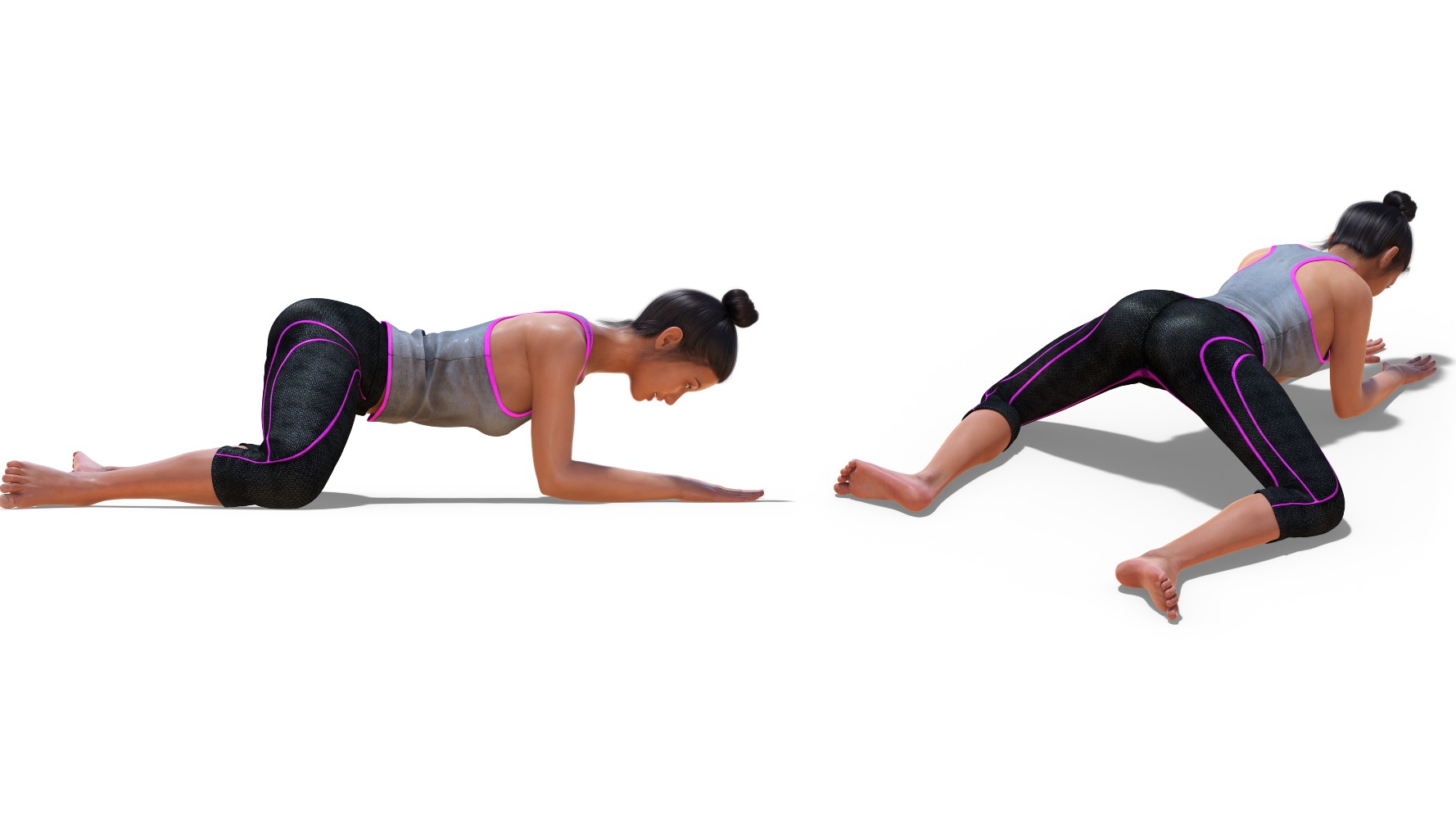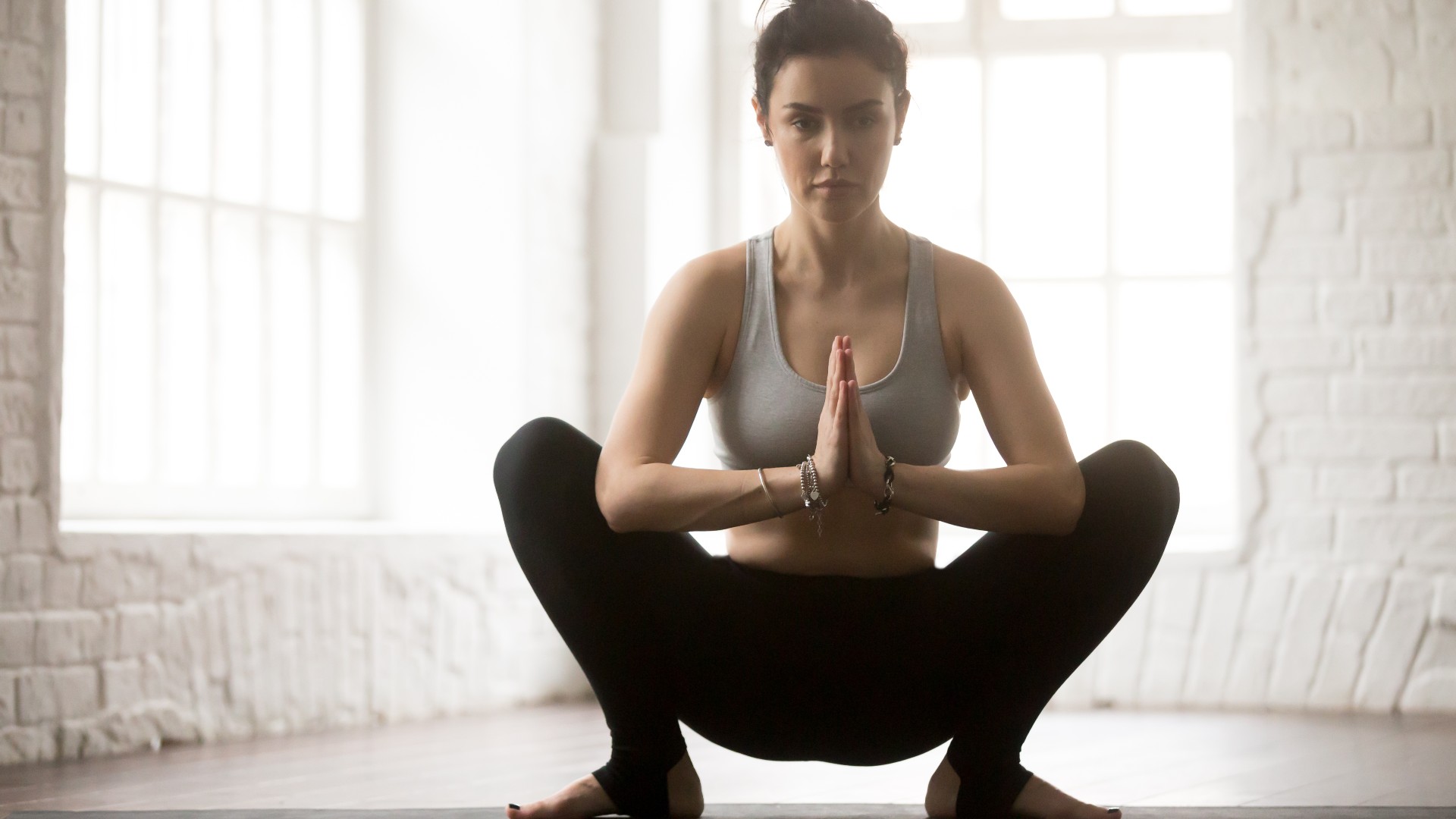
If sciatica or hip flexor pain puts a hard stop on your workout plans, try this 3-move stretching routine. These stretches for sciatica also ease tight hip flexors and are my go-to for sore muscles and limited range of motion.
Sciatic nerve pain can cause a dull aching or pinching sensation in your lower back, hips, bum and down the legs, and around 40% of the population suffer from it in their lifetime. Tight hip flexors are more common, often caused by sedentary lifestyles and prolonged sitting. In many cases, lower back pain results from tight hamstrings, glutes or hip flexor muscles.
Fear not though, because as a personal trainer, I’ve spent years developing mobility and stretching routines to keep joints healthy, release tension, improve range of motion and prevent injury. Grab one of the best yoga mats, and get ready to stretch it out.
What is sciatica?
The sciatic nerve starts in your lower back and runs down both legs, and pain usually occurs somewhere along the nerve when it becomes pinched. Experiences vary from person to person, but most people report pain or aching on one side, and some experience tingling or numbness in the muscles.
Your first port of call should always be a check-in with your physician or a relevant healthcare provider if you’re experiencing pain or discomfort and want to try a new exercise and recovery regime. But, if you're cleared to exercise, here's three stretches I swear by.
I'm a personal trainer — and here's my 3-move stretching routine for sciatica and hip flexor pain
None of these stretches should aggravate the sciatic nerve, but we also recommend these best exercises for sciatica if you need more inspiration.
Frog pose

It’s the one move I use weekly with clients, and never disappoints. That’s if you can get over its nickname — the pelvis breaker.
Get instant access to breaking news, the hottest reviews, great deals and helpful tips.
Classically used in yoga, it translates as Mandukasana in Sanskrit. And obviously, the TikTokkers have since picked it up and sent it viral. The pose externally rotates your hip joints and stretches your hips, adductors (inner thighs) and lower back, acting as a deep groin and hip opener that could improve lower-body workouts, posture and squat depth.
Anyone who sits for long periods should try it, as sedentary lifestyles can cause back pain and tight hip flexors. Your hips and lower back also play a crucial role in posture, so stretching and strengthening your hips and back could help. Existing studies have also shown that Yin yoga involving long static stretches could relieve stress and improve sleep.
Learn more about this one move for hip flexor pain here.
How:
- Start in a tabletop position on hands and knees
- Shift your weight forwards over your shoulders and slide your knees to the sides. Keep your inner knees hugging the mat
- Slide your feet outwards so that they’re in line with your knees, with the inner sides of your feet pressing into the mat
- Gently push your hips back toward your feet
- Lower your elbows to the floor and rest your head on the mat. Use a bolster or yoga block to prop you up if necessary. Hold for several minutes.
Yogi squat

You don’t need to be a bendy yogi to sit in a yogi squat — there are ways to adapt it. Try folding a yoga mat or towel or placing two yoga blocks underneath your heels if you can’t get them flat on the mat. The stretch is great for your lower back, hips, knees, ankles and adductors.
How:
- Start in a squat position with feet slightly wider than shoulder-width apart, heels pressed down, and toes pointed slightly out
- Lower your bum and lift your chest, then bring your hands to prayer position in front of your chest
- Use both elbows to push your knees out so that they track in line with your heels
- Find a depth you can hold for 30 seconds, then begin to roll from one heel to the other for a gentle hip massage. Repeat for 30 seconds.
The International Journal of Yoga found that yoga poses requiring pelvic and trunk movement engage core muscles such as the hip flexors and diaphragm, which could improve core strength.
Modified pigeon

Pigeon is primarily a glute and hip stretch that targets the deep gluteal muscle called the piriformis. People who practice this pose regularly notice a better range of motion and reduced pain.
How:
- Start by sitting on a chair with your feet flat on the ground
- Cross your left leg over the other with your ankle resting on the thigh of the opposite leg
- Gently pull your top knee up toward the opposite shoulder, twisting your torso toward your knee. Try the move on your back for extra support or seated (see photo above) if it feels more challenging.
Remember, some exercises could worsen pain, so here are some exercises you should avoid if you suffer from sciatic nerve pain and how to exercise around them. Try to hold each stretch for several minutes and repeat for two rounds if you have time. I like doing them just before bed as part of a bedtime yoga routine, which also helps me sleep better.
Best stretches for sciatica and hip flexor pain
Your network of muscles, tendons, joints and ligaments connect across the body. That means pain in one place could originate elsewhere, so the best mobility exercises and stretches should target various muscle groups. When done regularly, they could relieve pain and improve symptoms. Aim for daily or several times per week.
The International Sports Sciences Association explains that flexibility is the muscle's ability to lengthen passively, like holding a hip or backstretch. Mobility refers to motor control and the ability to move a joint through its full range of motion — like how far you can open your hip.
Both could improve athletic performance, help you lift heavier, run faster and become a more effective athlete. This 3-move stretching routine for sciatica and hip flexor pain uses static stretches and long, deep holds to release tension, boost flexibility, build strength and reduce pain.
More from Tom's Guide
After all our fitness challenges at Tom's Guide, we love stretching out our sore muscles. Here are our favorites.
- These three assisted stretches develop flexibility and strength without equipment
- I just tried some simple hip mobility exercises for hip flexor pain
- Sciatica? Try these 3 doctor-approved exercises for pain relief
- The best stretches for tight hip flexors.

Sam Hopes is a level 3 qualified trainer, a level 2 Reiki practitioner and fitness editor at Tom's Guide. She is also currently undertaking her Yoga For Athletes training course.
Sam has written for various fitness brands and websites over the years and has experience across brands at Future, such as Live Science, Fit&Well, Coach, and T3.
Having coached at fitness studios like F45 and Virgin Active and personal trained, Sam now primarily teaches outdoor bootcamps, bodyweight, calisthenics and kettlebells.
She also coaches mobility and flexibility classes several times a week and believes that true strength comes from a holistic approach to training your body.
Sam has completed two mixed doubles Hyrox competitions in London and the Netherlands and finished her first doubles attempt in 1:11.
